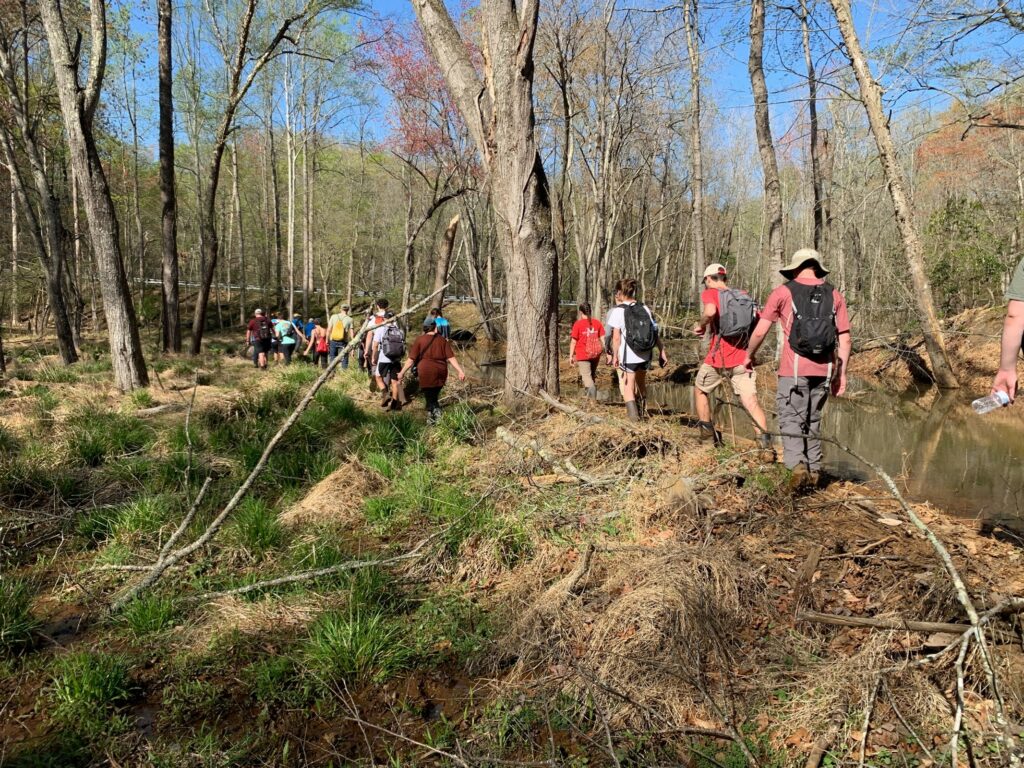Late last month, GreenVest and project partner Biohabitats hosted students from the University of Maryland on a tour of our Bacon Ridge Branch Stream Restoration Project. GreenVest’s Senior Project Manager David Merkey and Ecosystem Restoration Specialist Jack Turner led the group on this educational outing.
Part of the University’s Department of Environmental Science and Technology, Dr. Andrew Baldwin’s class focuses on wetland science which inspired the tour of the site. The ±18,000 linear foot stream and riparian buffer restoration that reconnected the stream with its floodplain reinforced their classroom knowledge. This floodplain reconnection restored the site’s wetland hydrology/hydroperiod by effectively raising the groundwater table within this coastal plain forest.

Dr. Merkey taught the students about the beaver dam analog technology implemented onsite and how it contributed to the site’s transformation. The Bacon Ridge Branch Project provides a unique opportunity to teach about the secondary benefits of restoration, as it exemplifies the successful implementation of a stream restoration with floodplain connection, which influences the uplift of many other elements. Dr. Merkey and Jack described these secondary benefits—habitat creation, plant community response to changing hydrology, hydrologic monitoring, adaptive management, and more—while hiking the length of the stream restoration. Students observed the groundwater monitoring wells installed on site to track groundwater levels before and after the project’s construction. As shown on the hydrographs in the Project Report, groundwater levels, on average, remained 2-3 feet above pre-construction levels, successfully restoring wetland hydrology.

While on site, trip attendees observed an abundance of wildlife including wood ducks, a belted kingfisher, a bald eagle, fish, snakes, evidence of recent beaver activity, and more! The project’s forested floodplain and surrounding upland forest provide important habitat for reptiles, mammals, various aquatic species, and birds, including Forest Interior Dwelling Species. Projects such as this one have an important role in providing a variety of habitats including forests, healthy streams, and functioning wetlands that can benefit many species throughout the ecosystem. Thank you to Dr. Baldwin and his students for joining us at one of our project sites!






